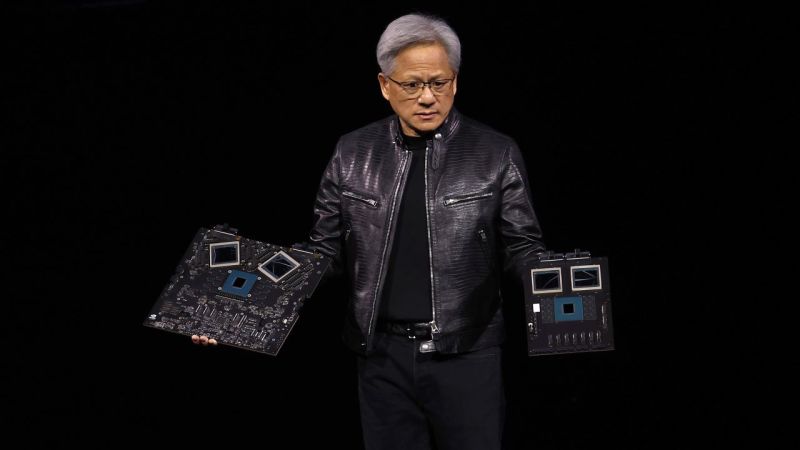Interesting take: NVIDIA‘s GTC announcements were not just about their products, but they have announced a massive expansion of the AI market by bringing AI to every industry and every enterprise.
NVIDIA‘s GTC 2024 keynote showcased how the company is pushing the boundaries of AI and accelerating its adoption across industries. CEO Jensen Huang unveiled a slew of innovations that will create larger AI models, AI everywhere, and faster time to market.
Here are 5 key takeaways on how NVIDIA is expanding the AI market:
1. Blackwell will enable really large AI models at lower energy requirements: The World’s Most Powerful AI Chip NVIDIA unveiled its next-gen Blackwell GPU architecture, boasting a staggering 30x performance boost over its predecessor Hopper. With support for ultra-efficient FP4 and FP6 precision, 208 billion transistors, a new transformer engine, and up to 192GB of HBM3e memory, Blackwell is poised to power the next wave of giant AI models at a fraction of the cost and energy consumption.
2. Supercharging AI Scalability with NVLink: The new Grace Blackwell GB200 SuperChip integrates two Blackwell GPUs with an Arm-based Grace CPU using high-speed NVLink interconnects. Combined with PCIe Gen6 and NVLink switches, this enables unprecedented scalability for AI workloads. DGX SuperPODs can now scale up to 576 Blackwell GPUs with exascale NVLink connectivity, shattering performance barriers.
3. Physical AI aka Robotics using Omniverse: NVIDIA is bringing AI into the physical world with Omniverse, its powerful simulation platform. From teaching humanoid robots with Project GR00T to powering Apple’s VisionPro mixed reality headset, Omniverse is emerging as the bridge between the virtual and physical realms. NVIDIA’s Isaac platform and new Jetson Thor module are set to accelerate the robotics revolution.
4. AI Factories: The Next Generation of Data Centers NVIDIA is rewiring the DNA of the modern data center to function as “AI factories.” With innovations like NVLink switches, Quantum InfiniBand networking, and liquid-cooled DGX systems packing up to 72 Blackwell GPUs, NVIDIA is providing the blueprint for scalable, energy-efficient infrastructure to power the AI revolution.
5. Empowering Every Company to be an AI Company: Perhaps most importantly, NVIDIA is democratizing access to AI with platforms like NVIDIA Inference Microservices (NIMS) and DGX Cloud. By containerizing turnkey AI models and providing cloud access to cutting-edge infrastructure, NVIDIA is enabling every company to harness the power of generative AI and build their own “AI factories,” regardless of their size or technical sophistication.
The era of pervasive AI is here, and NVIDIA is providing the picks and shovels for enterprises to mine its boundless potential.
What are your thoughts on the expansion of AI market by NVIDIA?

